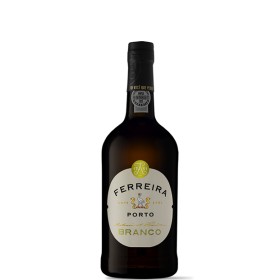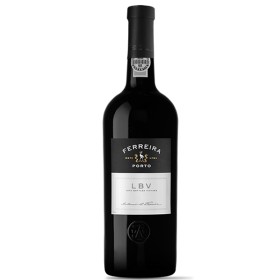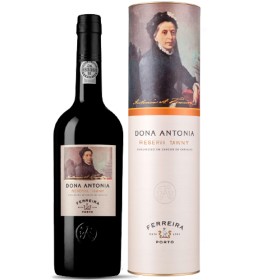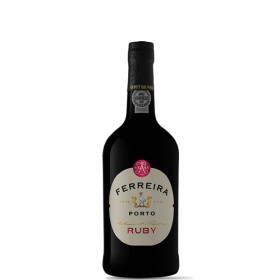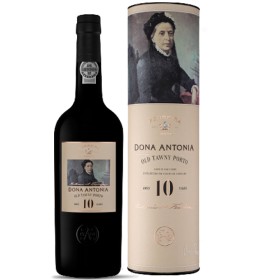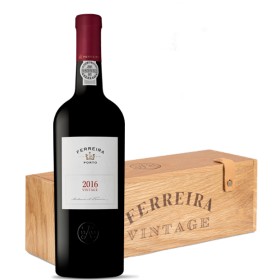- Mondo Vino
- 6082 views

Porto is a liqueur wine whose history is inextricably linked to water. Its grapes are born on the wonderful shores of the Duoro, it is produced directly in the vineyard and transported to the shore south of its estuary in Porto where it refines several years to then be able to take off across the Atlantic Ocean and historically reach the white cliffs of Dover. The Duero - the long river that rises in Spain and ends its course in the ocean - also has a strong connection with wine. In Spain it crosses the ribera del duero, rueda and toro wine areas, while in Portugal - where it takes the name of Douro - it passes entirely through the wine area of the Porto and Douro. The vineyards grow on the shores of basalt and granite of volcanic origin about 100 km east of Porto, where the wet and brackish winds of the ocean no longer lash the coast and precipitation is scarce, the grapes are harvested, pressed and fermented in the structures built within the vineyards that can be admired from the river. At a predetermined time, depending on the product you want to obtain, the fermentation is blocked with the addition of aquavite at 77% vol. produced by the pomace of the previous year. This results in a stable product. For the final quality of the Porto, fortification does not matter: it is a neutral alcohol, without flavors. The quality of the Porto therefore depends on the quality of the basic grapes, the cuts between the different productions and its refinement. Normally, wine does not stay to age in the Alto Douro area: large and choreographic barges (today it is made more often by land) once carried the barrels to Vila Nova de Gaia,the south bank of Porto, where it is refined at the large cellars of the companies. The city of Porto, on the other hand, develops on the opposite bank, to the north, united by an iron bridge built in the 19th century. The Porto is often underestimated by seeing little chance of food pairings. Just go to Portugal instead to discover that you can appreciate itfrom the aperitif in a fresh and fruity cocktail with a Porto Branco, to the dessert, with the classic chocolate pairing, in all its forms and types, also Fondante Extra. A Ruby Porto can be perfect with a risotto at Castelmagno but also with a roast, while at the end of the meal a Tawny Porto with Cheddar will certainly not leave you disappointed. To know how to combine wines, you must always start from understanding how they are produced and the different types, so as not to go wrong.
- In the White Porto the basic wine is never dry, it is always slightly sweet, it is very approachable and easy to drink. It goes well with fruit, cold and cocktails.
- Proto Ruby are aged in large barrels, they are therefore round wines, however they are never complex or structured, they focus everything on the fruit, which must be fresh, vinous and pleasant. They are not aging wines, but ready to drink.
- Porto Late Bottled Vintage: LBV are always Ruby but the result of an exceptional vintage, and have a longer aging, of about 4/5 years. Like a Ruby, therefore it is fresh and fruity, but enhanced, where intensity, finesse and depth are enhanced by aging.
- Porto Tawny have the same base as Ruby, however aging changes. After a passage of 3 years in large barrels continues its aging in barriques. In small wood the wine oxygenates much faster and is enriched with spicy aromas. As the wine ages the red color wanes, it veers to amber, oxidation and evolved tones become more intense, although freshness always remains present to support the wine. Porto Tawny are very complex, they have aromas of dates, nuts, ripe fruit, cooked, in spirit, spices, notes of cocoa, coffee and vanilla. In the mouth they are sweet, but structured and never cloying. Tawny can age for 10, 20, 30 or even 40 years in barrels.
- Porto Vintage are wines produced only in exceptional vintages, the quintessence of sweetness and elegance. It is wine that, although it represents only 2% of production, is a barometer for the prestige of the large houses of the Porto. It is not an acknowledgment given lightly, so much so that vintage is declared 2 years after the harvest. In fact, the cellars base authority and notoriety on the crystal clear quality of vintages, not on the bottles of Porto Ruby. It ages for 2 and a half years in wood or steel and then is bottled where it rests for at least 10 years. A Vintage Porto can be drunk on average after 40 years, without decaying. There are 100-year-old Porto that are still in perfect condition, thanks to the powerful structure, tannins and the remarkable acidity of the wine when it is bottled.

